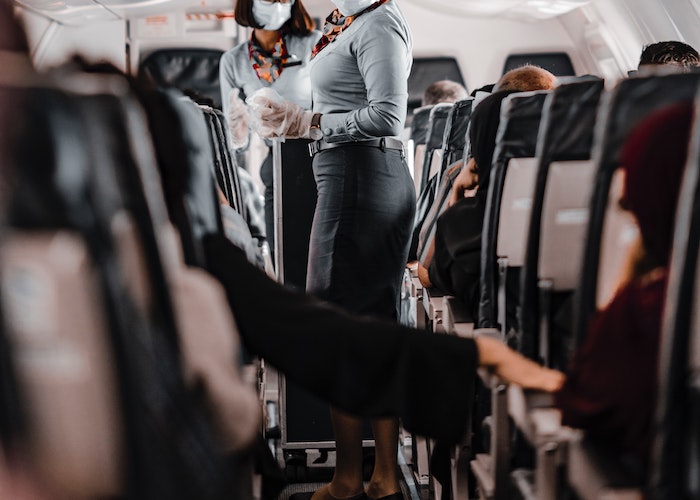
Each week, TFD is taking an in-depth look at the cost of living in other countries, to learn how people like us are able to fund their worldwide dreams. Moving abroad is something many of us regard as an unattainable goal, but it shouldn’t be reserved solely for people who don’t have to worry about money. We have an incredible lineup of people who have moved to every corner of the globe, and are more than willing to explain what their expenses are, and what it took to take the plunge and move abroad. If you live abroad, or have lived abroad recently, and would like to participate in this exploration, email maya@thefinancialdiet.com.
Last week, we explored Dubai. This week, Emily Dougherty, an American who taught in Thailand, answered the following 10 questions:
1. What city do you live in, and when did you move there?
I lived in a small town in northern central Thailand called Lom Sak. I moved there in May 2014.
2. What do you do for a living abroad?
I taught English for a semester to middle and high school students. The Thai school year runs from May to February, with a month-long break in October. I taught during the first semester.
3. How exactly did you get that job, and how did you afford to move there?
When I decided I wanted to go to Thailand, I researched different TESOL companies to find a program that included teaching placement as one of their benefits. Going through Greenheart Travel, I was able to get my TESOL certification, cultural/language lessons, and a placement guarantee. This took a lot of stress off because once I arrived I could focus on my TESOL course instead of worrying about finding a job after I was certified. Since my TESOL course was taught in Thailand, I was also able to begin the adjustment period before I was placed in my school.
I had a pretty solid savings account when I made the decision to go, which allowed me to pay for my program and purchase my flight as soon as I was accepted. The total cost for the program and flight ended up being around $2,000. Knowing I had approximately four months between the time I applied and the program start date meant I could cut down on excessive spending as much as possible to increase my savings.
I was living at home during this time, so expenses like rent and utilities weren’t an issue. My main expenses were my phone plan and car payments/insurance. I decided to suspend my phone plan while I was away and to take my car “off the road” so I didn’t have to pay full insurance.
4. What were your monthly expenses?
My monthly expenses included food, electricity, and adding minutes to my Thai phone. Rent was included in my teaching contract, so I was fortunate to not have to pay anything beyond the initial $2,000 for the flight and program. The food was relatively inexpensive: I could either make food in my kitchen (which was a luxury because not all accommodations had a stovetop or fridge) or go out for street food/to a restaurant. Lom Sak has two large grocery stores as well as outdoor markets throughout the week.
Lunch at school was 20-25 baht (50-60 cents). Topping off my phone minutes cost about 200 baht (~$6) every few weeks. Electricity was around 2,000 baht ($55) per month, depending on how much we ran our air conditioners.
One monthly expense I avoided was a motorbike rental. I purchased a bicycle during my first week in my town for about 2,000 baht because I did not want to use a motorbike.
5. What do you like about the culture of your city, and what has made it easy to acclimate?
My city, as any place in Thailand would be, was full of friendly people who would go out of their way to make me feel comfortable. I loved that it was removed enough from main Thai attractions that I had to use my basic Thai language skills, but big enough to have supermarkets that sold peanut butter.
It would have been a lot harder to acclimate as quickly as I did if it hadn’t been for my roommates and the young Thai student teachers at my school. My roommates were also American so we all experienced the culture shock of a new city together. The Thai student teachers were close to my age so it was easier to hang out together outside of school and for them to introduce me to different places around town.
6. What is the biggest challenge your new culture presents? Did you experience “culture shock”?
I could write a novel on this topic. I definitely experienced culture shock, but that was what I was looking for. As someone who doesn’t particularly enjoy hot weather, tropical fruits, monkeys, and had never taught before, I chose Thailand because it would put me out of my comfort zone.
The biggest challenge I found was adapting to the pace of the Thai lifestyle. Thai people are famous for their cool composure; things move slower, and you might not always be up to date on plans. They live by the expression “mai pen rai,” which is basically the unofficial motto of Thailand. It means “don’t worry about it” or “never mind.” This attitude shift was a welcome change from stress and deadlines at home and forced me to take a good look at my own habits.
7. What obstacles did you face when moving abroad, and how did you deal with them?
My main obstacle was what to do with my car while I was gone. I still lived at home, so I didn’t have any furniture to relocate, but my parents didn’t want my car to sit in the driveway for almost a year. I also did not want to pay for my full insurance package while my car was off the road. My uncle ended up helping me by letting me leave it on his property, and I surrendered my license plates so the insurance company would reduce my costs.
8. What advice do you have for someone looking to move to your city?
Take the time to learn some basic Thai phrases. Simple things like “hello” and “thank you” go a long way in making relationships with your neighbors and coworkers (and I would highly recommend learning how to say “bathroom”). My students loved when I would say things to them in Thai, which encouraged me to keep trying.
I would also recommend researching general facts about Thai culture and Buddhism ahead of time. It’s important to understand certain customs such as the fact that you shouldn’t be wearing shoes when entering a temple, or that women cannot touch Buddhist monks.
9. What was the process like for acquiring a visa before moving? How much did it cost?
I applied for the visa ahead of time through a Thai consulate. The whole process was completed by mail and only took a few weeks. Since my purpose of going to Thailand was to work, my program recommended I get a non-immigrant B visa. This visa can be single or multi-entry. The multi-entry was more expensive, but I spent the $200 so I could leave and return to the country without any problems. It was valid for a full year.
10. Are there certain expenses in your country that surprised you?
Overall, I was more struck by how inexpensive everything was. My teaching salary wasn’t very high in American dollars, but it went a long way in Thai baht. Comfort foods from home were pricey, but that was expected. Constantly purchasing bottled water was frustrating, but considering it was still inexpensive, it didn’t add up too quickly.
Emily Dougherty is an aspiring international educator who is always looking for an opportunity to travel. A proud Buffalonian, you can find her with a bag of cheese puffs, anxiously awaiting the next Olympic Games.




